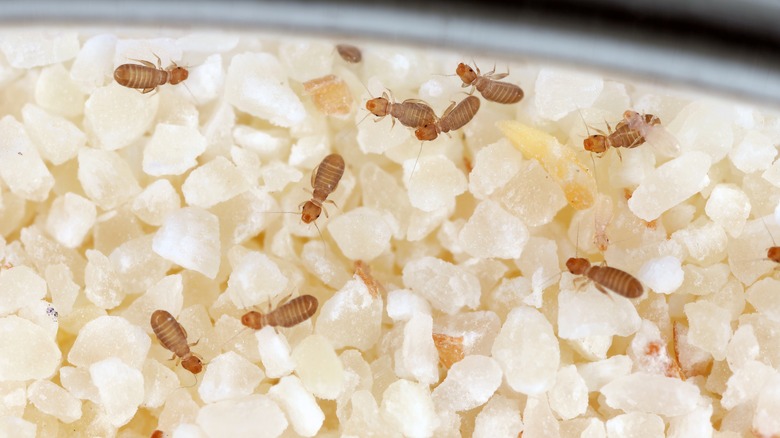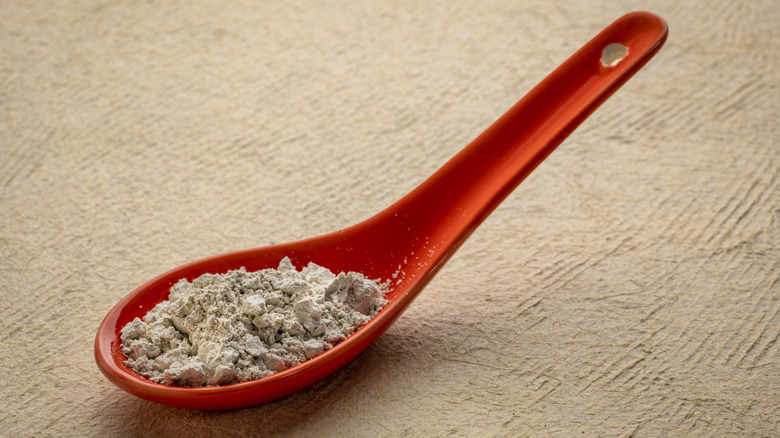This Is The Secret Weapon You Need To End Your Pesky Booklice Problem
Diatomaceous earth is a potent ally in your quest to rid your home of booklice. This naturally occurring, powdery substance – made from fossilized algae – works effectively by clinging to the booklouse's body. As these pests move through the substance, the fine particles inflict tiny cuts on their waxy exteriors, leading to dehydration and eventual death. Since they tend to move slowly, this may increase their contact with the diatomaceous earth, making the elimination process more successful. When using diatomaceous earth as a control measure, be aware that the powdery nature of diatomaceous, although generally safe for humans, can be toxic when inhaled in large amounts.
It's important to understand the nature of the pest you're dealing with. For example, knowing the appearance and behavior of booklice can assist in determining the most effective application strategy for diatomaceous earth. These pests are often mistaken for other insects due to their small size and appearance. Typically, booklice measure less than 1mm in length, making them a challenge to spot. They have a somewhat flattened appearance, and — unlike many household pests — they lack wings, making them less mobile. They are usually light brown or cream in color, allowing them to blend easily into their surroundings. Despite their name, booklice are not true lice and do not pose the same health risks. However, their presence can be unsettling and may lead to damage to paper products and textiles.
Using diatomaceous earth and pinpointing booklice habitats
Getting a handle on booklice starts with knowing where to look for them. Understanding their preferred hangouts can significantly improve your chances of keeping them at bay. According to the British Pest Control Association, these tiny pests have a knack for finding the dampest and most mold-rich corners of your home. So your bathroom and kitchen are go-to spots to monitor. In the kitchen, they might be hanging out near food storage areas, especially if there's any damp or spoiled food around. They're not picky eaters — any bit of mold or fungus is a feast for them. In bathrooms, look in the less-traveled corners, under the sink, or anywhere moisture tends to linger. Your bookshelves could also be a hotspot for booklice, especially if they're in a room with high humidity. These pests are drawn to the glue in books and wallpaper, making your cherished collection a potential target. And don't overlook storage areas like basements and attics. These spaces, often less ventilated and more prone to moisture, can become ideal breeding grounds for booklice.
Once you've identified the favored haunts of booklice in your home, the next step is the strategic application of diatomaceous earth. Start by lightly spreading an even layer along baseboards, inside cupboards, around bookshelves, and particularly in those damp areas where booklice are most likely to be found. A gentle, even distribution is key –- applying too much can actually deter booklice from coming into contact with it.
Combining diatomaceous earth with other preventive measures
Remember, when using diatomaceous earth against booklice, its efficacy takes around two weeks, and you may need to reapply it. Also, if the substance gets wet, reapplication is a must. So, in those damp corners of your home, you'll want to reapply it more often. After you clean, or if an area feels a bit more humid than usual, slap on a fresh layer of diatomaceous earth to keep the protection up and running against these pesky intruders. But here's the thing: Diatomaceous earth isn't a solo act. It may work best when you team it with other tactics to create a foolproof plan against booklice. Tackling the humidity in your home is a big part of this. You might need a dehumidifier in the damper areas, fix any pesky leaks as soon as they pop up, and keep the air flowing with good ventilation.
And let's not forget about regular cleaning, especially in spots where mold loves to hang out — this is a must. Mold is like a dinner bell for booklice, so cutting off their food supply is key. Also, keep an eye on how you store your food. Make sure your grains and cereals are tucked away in airtight containers to cut off any free meals for booklice. Diatomaceous earth is quite the all-arounder, too. It's not just for booklice; this natural, non-chemical warrior takes on a whole array of household pests. Just make sure you're grabbing the food-grade variety for home use.


